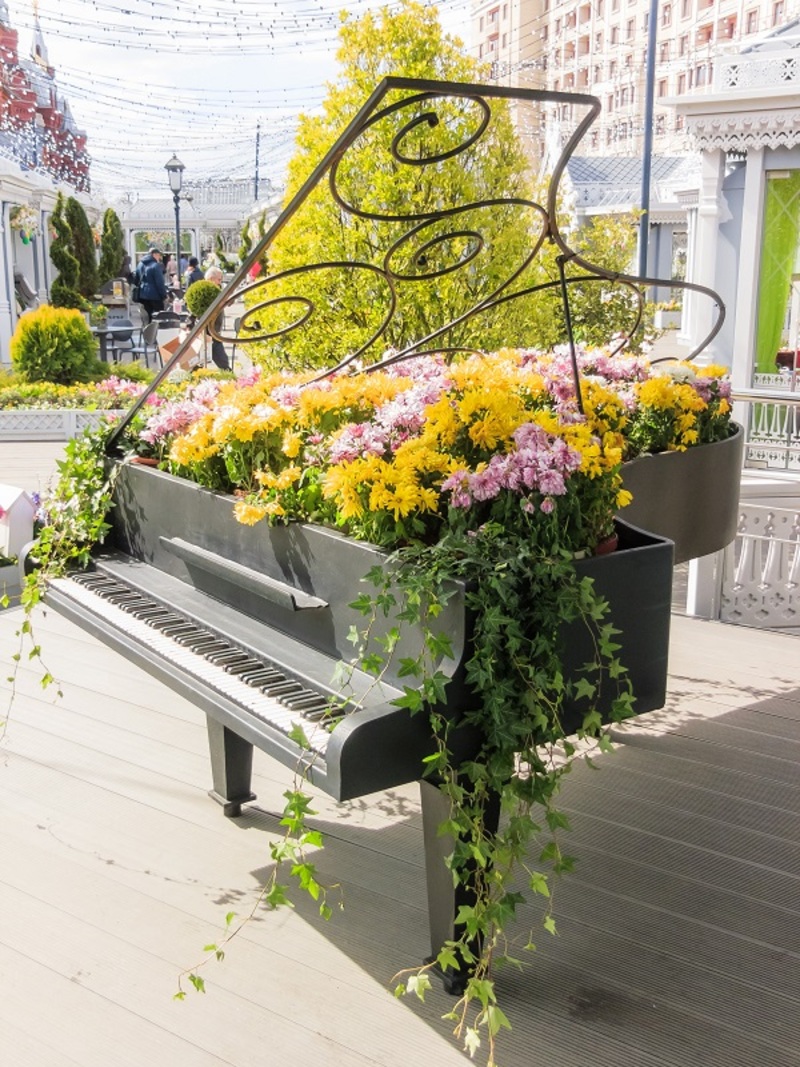Keeping Poinsettias Alive and Gorgeous Until Spring: The Ultimate Guide
Poinsettias are iconic symbols of holiday cheer, capturing hearts with their vibrant red, white, or pink bracts. But what happens after December fades away? Many people assume these festive plants are short-lived, destined to wilt and wither after the holidays. However, keeping your poinsettias healthy and beautiful until spring--and beyond--is entirely possible with the right care. In this comprehensive guide, you'll learn everything you need to know about caring for poinsettias long after the new year begins, so they remain lush, colorful, and thriving.

Poinsettia Care Basics: Understanding Their Needs
To keep poinsettias alive until spring, start by understanding their unique needs. Native to the tropical forests of Mexico, these plants (Euphorbia pulcherrima) flourish in warm, well-lit environments with moderate humidity.
- Light requirements: Place your poinsettia near a window with bright, indirect sunlight. Direct rays can scorch the leaves, while insufficient light will cause leaf drop.
- Temperature: Maintain a temperature between 60-70?F (16-21?C) during the day, and not below 55?F (13?C) at night. Cold drafts or sudden temperature changes are their enemies.
- Humidity: Poinsettias love moderate humidity. If your home is dry, use a pebble tray with water or a humidifier.
Common Mistakes That Shorten Poinsettia Lifespan
- Overwatering or underwatering--both can stress the plant. Always check soil moisture before watering.
- Exposure to drafts, whether from windows or doors.
- Direct contact with heat sources such as radiators or fireplaces.
- Neglecting sunlight needs--poinsettias crave bright and indirect light after purchase.
Indoor Poinsettia Care After the Holidays
Once your holiday decorations come down, your poinsettia can still be a centerpiece of your home. Here's how to keep it lush and looking good until spring:
Watering Your Poinsettia Properly
- Check soil moisture every 2-3 days. Insert your finger about an inch deep--if it feels dry, it's time to water.
- Water thoroughly until excess drains from the pot, but never let the plant sit in water. Empty the saucer after watering.
- Reduce frequency of watering if temperatures are cooler or the plant is growing slower.
Fertilizing for Long-Lasting Color
- Poinsettias don't need fertilizer when in bloom (around the holidays).
- Start feeding with a balanced, all-purpose houseplant fertilizer once a month starting in late January or February.
- Follow labeled instructions to avoid over-fertilization, which can cause root burn and leaf drop.
Maintaining the Ideal Environment
- Keep poinsettias away from cold drafts and sudden temperature shifts (never place near exterior doors or windows that open often in winter).
- Don't let their leaves touch cold window panes.
- If the air is dry, mist the plant occasionally or use a humidity tray to increase ambient humidity.
Solving Common Poinsettia Problems
Why are my poinsettia leaves turning yellow or dropping?
Yellowing or falling leaves are often caused by:
- Overwatering--the most common culprit.
- Sudden changes in environment--like moving the plant to a less sunny spot.
- Drafts or temperatures below 55?F.
- Pests such as whiteflies or spider mites (look for sticky residue or webbing).
*To solve these issues, adjust watering, maintain stable temperatures, and inspect regularly for pests.*
Transitioning Your Poinsettia as Spring Approaches
By late winter, most poinsettias slow their growth, and the colorful bracts may start to fade. But your plant is far from finished! With the proper care, it can become a beautiful green houseplant--or be prepared for reblooming next winter.
Late Winter and Early Spring Poinsettia Care
- Continue placing your poinsettia in bright, indirect light.
- Once the colored bracts fall, prune the plant back to about 4-6 inches above the soil. This encourages strong new growth.
- Increase humidity and begin light fertilizing (monthly).
- If you wish, move the plant to a slightly larger pot with fresh, well-draining potting soil as spring arrives.
Encouraging Your Poinsettia to Rebloom Next Year
One of the most rewarding aspects of long-term poinsettia care is getting your plant to rebloom for next holiday season. While this requires a slightly advanced approach, it's not out of reach for devoted plant lovers.
What is Photoperiodism and Why Does it Matter?
Poinsettias require short days and long nights (uninterrupted darkness for about 14-16 hours daily) to set colorful bracts. This happens naturally in their native environment, but indoors, you must mimic this lighting schedule.
Step-by-Step Reblooming Instructions
- From October 1 to December 1, move your plant into total darkness each evening from 5 p.m. to 8 a.m. (use a box or closet that seals out all light).
- During the day, return your poinsettia to a sunny, indirect spot.
- Continue this routine for 8-10 weeks. After this period, the plant should develop bright bracts for the holidays.
- Throughout, keep watering lightly and provide regular fertilization every 2-3 weeks.
Poinsettia Varieties: Beyond Classic Red
To keep things fresh and visually appealing all winter, consider growing several types of poinsettias. Today's varieties include not just the traditional red, but also pink, cream, marbled, and speckled bracts. Some popular choices:
- Jingle Bells: Red bracts speckled with white.
- Winter Rose: Curled bracts with a ruffled, rose-like appearance.
- Ice Punch: Stunning variegation of white and red.
- Prestige Red: Deep red, upright bracts perfect for display.
- White Red Glitter: White, yellow, and pink hues with splashes of red.
Your Poinsettia Care Calendar: Month-By-Month Tips
| Month | Care Notes |
|---|---|
| January | Maintain indirect light and moderate water. Don't fertilize yet. |
| February-March | Start monthly feeding. Prune back when bracts fade; continue bright light. |
| April-May | Repot if necessary. Encourage strong growth with even moisture and fertilizer. |
| June-August | Maintain as a houseplant or move outdoors (shade only). Pinch growing tips for bushier shape. |
| September | Move back indoors if outside. Prepare for photoperiod treatment. |
| October-December | Initiate darkness routine for reblooming. Enjoy colorful bracts by holidays! |
Frequently Asked Questions: Keeping Poinsettias Gorgeous Through Spring
Can I put my poinsettia outside in spring?
Yes! Once all danger of frost has passed and nighttime temperatures stay above 55?F (13?C), your poinsettia can safely transition outside. Place it in a shaded, protected spot and continue regular watering. This helps it stay healthy, bushy, and ready for indoor display in autumn.
Are poinsettias poisonous to pets or children?
Poinsettias have a reputation for being toxic, but the risk is usually overstated. The sap can cause mild stomach upset or skin irritation in sensitive pets or people, but they're not deadly. Still, keep your plant out of reach, especially from curious pets.
Why is my poinsettia dropping leaves after the holidays?
This is usually caused by environmental changes--shift in light, temperature, humidity, or improper watering. Gently acclimate the plant to its new location, keep it consistently warm, and avoid soggy soil.

Bonus Tips: Extending Poinsettia Enjoyment Year-Round
- Combine poinsettias with other houseplants for diverse, lush winter displays.
- Pinch or prune regularly--after spring pruning, continue to pinch back tips every six weeks for a fuller, sturdier plant.
- Try white and pink varieties for a spring-fresh look long after the holidays end.
- Entertain guests with your healthy poinsettia--it's a conversation starter and proof of your green thumb!
- Gift rebloomed poinsettias to friends next holiday season for a personal touch.
Conclusion: Enjoying Lively Poinsettias Until Spring--and Beyond
With attention, patience, and these proven care strategies, poinsettias can be vibrant and healthy for months after the holidays. Instead of relegating your plant to the compost after New Year's Day, embrace its potential! Your efforts will be rewarded with ongoing beauty, lush foliage, and--if you choose--a sea of colorful bracts just in time for next winter. Whether you prefer classic red poinsettias or daring pastel varieties, nurture them right and they'll remain alive, attractive, and gorgeous until spring ... and year after year.
For more expert tips on houseplant care, seasonal plant styling, and keeping your winter blooms lasting longer, bookmark this guide and share your own poinsettia success stories below!

